#post-matrix throwdown
Explore tagged Tumblr posts
Photo
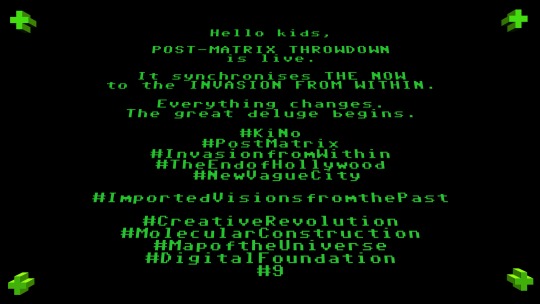
Next level, kids, next level. The proverbial zipper has been grabbed and pulling it all the way down is going to be VICTORY WITHOUT WAR, thanks to two decades of work and the power of recordings.
#Ricordata#Post-Matrix Throwdown#Invasion from Within#Simulacrum#Molecular Construction#Post Matrix#Music#Film#Philosophy#Poetry#Creative Genius
2 notes
·
View notes
Text
Godzilla Minus One
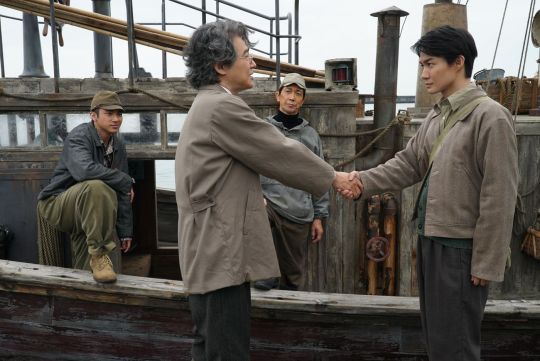
I’ve been going through something of a Godzilla crash course for the past year or so. When I was pretty little, I think I once rented a VHS of the original Godzilla from my local library. I don’t remember almost anything, but I think the themes and talking went over my head and I was mostly disappointed he wasn’t punching another monster. Then, I got a McDonald’s toy of the 1998 Godzilla, which was in my regular school backpack rotation for a while, and... that was about the extent of my experience with the guy.
Two of my best friends, though, are huge Godzilla stans who grew up watching just about every movie that’s ever released. After discovering my innocence, they’ve taken it upon themselves to educate me in his big scaly ways.
Most of these screenings were well before I started keeping this journal, so I don’t have deep thoughts on them. We started with Godzilla Against Mechagodzilla - wasn’t impressed by the robotic human characters, but Kiryu is sick as fuck, no getting around it. Next was Anno’s Shin Godzilla - as a lifelong Evangelion fan, I was really tickled by how much the entire movie felt like an extended, live-action Operation Yashima sequence, and the half dozen remixes of Decisive Battle were the icing on the cake. Final Wars, despite clearly being made by some folks who had just seen The Matrix and wanted in on that action, was exactly my kind of schlock and I honestly can’t wait to rewatch it. Tokyo SOS was kind of forgettable? …outside of the scene where the rival punches a fly out of the air one inch from someone’s face, which I now do weekly. And finally, All Monsters Attack was a wild fever dream of a movie; the plot is about a child vividly hallucinating Godzilla fighting giant crabs and shit in order to deal with his own growth and confidence issues, and that all works… exactly as well as it sounds like it would work. Overall, I’ve certainly enjoyed my time with the franchise, but it’s certainly in a more, I dunno, popcorny way.
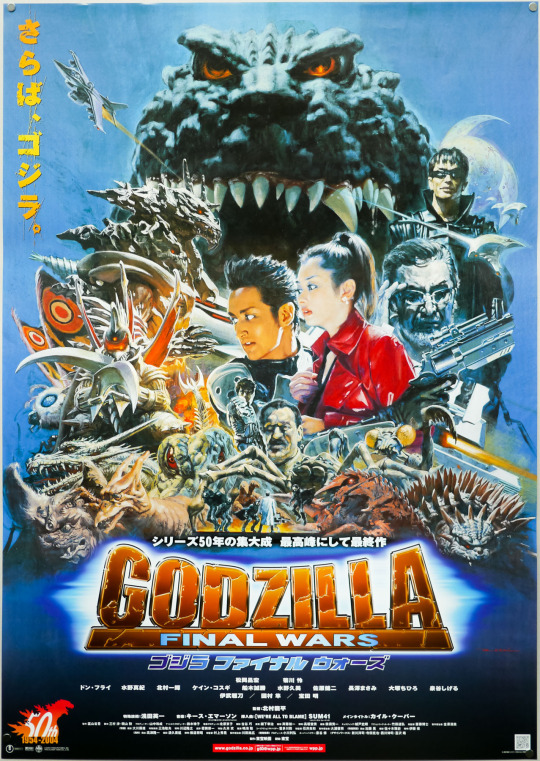
So color me surprised having seen Minus One and being genuinely impressed on all fronts!
This is easily the most compelling human storytelling out of all the Zils I’ve watched. To be honest, during the long gap between Godzilla’s introduction and his reappearance in the plot, I got so fully invested in the characters and the story that was unfolding, it was a little jarring having a big monster show up. The emotional core of the story, based around a found family trying to find meaning in their lives in a devastated, post-war Japan, was genuinely engaging, well-acted, and absorbing. I guess Godzilla being there is what got my butt into the seat, but I honestly wouldn’t have minded a more grounded take on this scenario/era either.
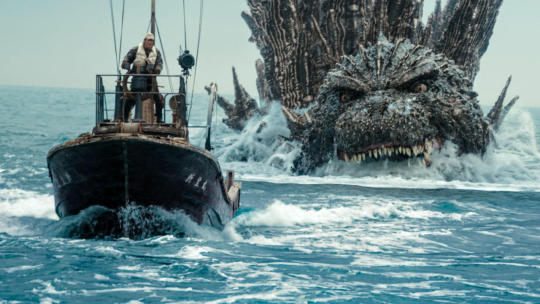
I quite liked that Godzilla’s design in this movie felt focused around his aquatic habitat - he felt very lithe, crocodilian and deadly in the water.
Similarly, after spending so much time digging into the hopelessness felt at large by the citizens we see, and the widespread devastation of Tokyo after the firebombing, Godzilla coming in and attacking Ginza felt like a gut punch. Typically, in the Godzillas I’ve watched, at least, the moment where Godzilla finally shows up and wrecks shop is a moment for the audience to cheer. You recognize that the horror and destruction he’s wreaking is bad, of course, but for one reason or another the blow is usually softened tonally. In Shin Godzilla, for example, we watch plenty of montages of Japan’s well-oiled, calm evacuation plans being carried out, so we’re not worried as much about the human toll. In the more creature feature entries, like Tokyo SOS, these type of scenes are more WWE throwdown than human catastrophe - the city’s really just backdrop, and it’s time to get hype. Minus One even has some moments like this, in my opinion - the scene when Godzilla first engages the battleship and they cut off his iconic roar has strong “real done with your shit” vibes that make the film’s debut atomic breath a real crowd-pleaser.
But man, the Ginza scene? Absolutely devastating. Panicked, weary crowds, scores of people visibly trampled underfoot, the black rain calling back to Japan’s nuclear strikes… the entire scene is designed to be a nightmare, and I thought it was a powerful decision in a franchise movie to make the viewer squirm and wish the titular character hadn’t shown up at all.

“Godzilla, bro, look. My job? The job I’m working to feed this orphan who showed up on the doorstep of my dead parents' house? That job is shooting active mines out of the ravaged coasts of my country on a fishing boat at great personal risk to myself and my only friends. Did we really need this? Was this warranted? Could you just like, fuck off?”
Overall, I just can’t get over how strong the character work and theming was. There’s a lot of musing on the value of a life, survivor’s guilt, and people grappling with the aftermath of a lost war while figuring out how they can still make a difference in their community. In the opening scene, you can already tell from the conversation between the main character and the engineer that they both understand the war is over, and yet Shikishima carries guilt with him the entire movie about not committing the meaningless sacrifice his country asked of him. He’s absolutely wracked with guilt, feeling that he’ll be rejected by society for failing - and to a degree he is, especially in the first act. After that, though, time and time again, the movie shows a community coming together, refusing to let each other give in and succumb to guilt, and finding ways to rebuild their home and move forward on their own terms, rather than under the direction of a government that's abandoned them.
The standout scene for me was Shikishima’s trauma coming to a peak when he wakes up at night and questions if he’s been dead all along, wondering if his current life is just a hallucination. I feel like I’ve seen that exact scene or moment in other media before, but it always felt like empty words, unconvincing; here, the buildup and acting was just so stellar that I fully resonated with this broken man and bought every word.
8 notes
·
View notes
Link
Dirt 5 review – Thrilling, fun, and accessible - Codemasters moves Dirt firmly into arcade racer territory, with great success. I enjoy feeling great at video games even if I’m bang-average. I get enough of being okay in everyday life, so when a racing game makes me feel like I am one with the car I think a special part of my brain unlocks. Dirt 5 is such a game, letting me feel like I’m in The Matrix and have taken that special pill from Limitless. This is a longwinded way to say that Dirt 5 is a top-notch arcade racer, and one that fills a gap that very much needed filling. Importantly, Dirt 5 is a very different experience to the Dirt Rally series. If you want the point-to-point stage events, Dirt Rally is there for you. While Dirt 5 has some traditional rally stages, they are not the focus and are not multi-stage affairs – plus you have the entire pack of opponents jostling with you, which isn’t very pure rally. Also missing is a co-driver, so you don’t get useful info on upcoming corners. There’s also no rewind feature, a series mainstay for years. While I thought this deliberate omission would lead to frustration, in truth I rarely felt the need for it and instead made more of an effort to learn where best to take risks on courses. Career mode presents you with five event groups, each comprised of numerous races. While this starts off as a linear path through the races, it soon opens up to allow for any less favored race types to be ignored. I’m not a huge fan of the sprint races that require the use of the cars with the ridiculously oversized wings, so avoided them. Trick-focused Gymkhana also doesn’t really do much for me, so I skipped over most of those too. The good news is that there’s so much on offer that this kind of picking and choosing doesn’t make the game feel small. The circuit-based Ultra Cross races, point-to-point Rally Raids, Ice breaker short circuit events, and super off-road Pathfinder tracks are all high points, but the key is that there’s a lot of content here, with all the events spread over 10 locations. Add in varying weather and time of day and I never felt like I was having to grind the same locations to make progress – in fact, I only found myself going back to earn some extra required stamps on one occasion as I worked through the career. These events are tough, but great fun. As I said, it’s great to feel like you’re good at something. Online leaderboards are there for those who want to challenge themselves, and getting 100 percent completion will take a higher level of competency and a lot more time. I haven’t crunched the numbers, but I made it through the career with what looked like at least half the events left to play. On top of that, there are a dozen or so Throwdown events against specific AI racers, plus some sponsorships to handle, offering bonuses based on race performance. Playgrounds is the user-created content portion of Dirt 5, letting you knock together custom courses in arenas. You can pick between checkpoint races, Gymkhana trick events, and an object smash high-score event. It’s early days and so hard to say how good these courses will be, but there’s already a lot of promise being shown. I attempted to recreate my semi-local multi-storey carpark, got fed up after 10 minutes and quit before I’d managed to build a second level, but the tools seem solid. Online modes are split between proper racing and party events. Vampire is the successor to Outbreak mode from Dirt 3 and is superb fun as you hunt down other cars or try to evade the touch of the vampiric car troop. On the more serious side, the event types found in the career mode are playable online with a maximum of 12 players. At the time of writing I’ve only managed a handful of online races, but performance was good. With Dirt 5 being a next-gen launch title for PS5 and Xbox Series X/S, I’ve seen a fair bit of commentary online about how it’s not much of a looker. Those people are wrong or have extremely high standards. While I’m not talking about the next-gen versions here, on Xbox One X and PS4 Pro (I didn’t test on the base consoles) Dirt 5 can look gorgeous, with a touch of Motorstorm and Driveclub about its visual makeup. Draw distances are superb, and little visual flourishes such as sandstorms and fireworks at night add a spark. Dirt 5 looks especially pretty at night. If there’s a blemish it’s the frame rate, especially on Xbox One X. Dirt 5 offers two visual settings, one prioritising frame rate and the other pushing resolution. For me, neither is the ideal option on One X, with the frame rate mode being just a tad under locked and with a bit of screen tearing, and the resolution option a bit too uneven in performance. I ended up bouncing between the two, unsure what I liked best, but knowing that I didn’t love either. It’s a shame, but not a devastating blow, and something I expect the Xbox Series X/S versions will not suffer from. On PS4 Pro the situation appears better, at least to my eye. Frame rate mode and resolution mode both seem to stick to their targets without as much deviation. In their current states, then, I’d opt for the game on PS4 Pro, but future patches could change this. Worth mentioning is the impressive soundtrack, which managed to make me feel ancient at points but also caused reactions such as “oh, that’s Pearl Jam,” and “ooh, that’s not bad,” while I whipped out Shazam to see who a previously unknown band was. Less successful is the in-menu radio show/podcast. It’s not bad by any means, but I couldn’t help but liken it to the kind of talk radio my mum used to put on to “keep the house company” while she was out. I’m a big fan of Dirt 5. It’s not going to garner the praise of a Gran Turismo or a Forza, but it’s exactly the kind of game I was after. It’s fun, easy to get into, full of variety, looks pretty, and features cars that slide beautifully around corners. Dirt 5 is a feel-good game at feel-bad time, which is about the best time for it to exist. Versions Tested: Xbox One X and PS4 Pro. Copies of the game were provided by the publisher. The post Dirt 5 review – Thrilling, fun, and accessible appeared first on VG247. http://diariozombie.ar/dirt-5-review-thrilling-fun-and-accessible/
0 notes
Text
Nearly two years ago, I wrote a blog post detailing the methodology behind a new digital humanities project. I wrote from Accra, where I was funded through a Research Enhancement Project Grant from Wayne State University to do preliminary data collection and test technology as part of the initial stages of work on a new, interactive online map of the trotro system in Accra. I embraced digital history (in the Accra Wala project, in this blog, in my classroom) as a way to expand the reach of my research on the history of motor transportation in Ghana. That research has been published in several articles and a book, which are largely inaccessible to the people in Ghana who participated in the research and were most greatly affected by the implications of its arguments.
Delivering my new book to the leadership of the La Drivers’ Union
Digital history also opened new analytical, conceptual, and creative possibilities. Digital technologies enabled me to visually represent the complexity of the network that my work could only describe linearly. That complexity was represented through the map itself. But the multiple layers we could build into the map – sensorial layers of audio, visual, and kinetic experience – could also demonstrate the meaning associated with place. By bringing the map to life, we could transform the way that we understand mapping. By opening the site to public submissions, we could create a new form of engaged community history. That community most obviously included residents of Accra and citizens of Ghana – trotros represented a uniquely Ghanaian culture of automobility and urban life. But trotros were also part of a global conversation about the possibilities and challenges associated with motor transport technologies and urban growth.
As such, I saw Ghanaian experiences of automobility and urbanity as opportunities to engage a much broader audience across Africa and the postcolonial world, where one might find similar sorts of quasi-informal urban networks. Those same issues spoke in a different way to questions about public transport infrastructure and urban development in cities like Detroit – parallels that provided new opportunities to educate and engage the American public in more complex and dynamic understandings of the diverse cultures and histories of the African continent.
I also saw an opportunity to engage a broad and diverse audience in questions about the production and practice of history. The map’s contents constitute an archive of primary sources, which could be explored and analyzed to answer historical questions about the social, cultural, economic, and political life of Accra’s residents. We plan to create itineraries that would guide people through the map – a sort of entry point and introduction to the city and its rich offerings. By more clearly exposing the process and methodology of history and guiding users through the interpretation and analysis of sources, we hope we can inspire further exploration of the map’s rich offerings and engage the general public in the production of history. At the same time, I saw the map as an educational tool that teachers and students could use inside and outside of the classroom. Faculty in relevant courses could ask students to follow an itinerary and develop historical questions, or even research and propose new itineraries. Graduate students and researchers could upload their data or construct their own itineraries informed by fieldwork. This engagement, we hoped, would mean that the site would stay fresh and dynamic and growing.
These visions fit within a roadmap for the project, which we prioritized within short, medium, and long-term timelines. I knew the project was complex. That complexity brings with it a number of challenges in terms of time, money, and labor. Two years later, we do not yet have an operational website. But that does not mean that the project has stagnated or failed. While some digital history projects are fast and easy – work that can be accomplished during a semester or a few weeks – others, we know, require much greater planning and collaboration.
Presentations
Both the challenge and the appeal of digital history projects is that they are or can be constant works in progress. Talking about that progress – its challenges and opportunities – provides important opportunities to gain feedback, establish partnerships, and reflect on the projects goals and the means by which we anticipate achieving our goals. Over the course of the last two years, I have taken multiple opportunities to share the methodology and vision behind the Accra Wala project with diverse audiences in the US and Ghana – from the Humanities Center Conference at Wayne State University to HASTAC 2015 to the Ghana Studies Conference to the Meltwater Entrepreneurial School of Technology (MEST) and Impact Hub in Accra.
https://twitter.com/Nansyie/status/791265645858021380
https://twitter.com/penseBien/status/791269869912256512
Those presentations generated feedback and support from scholars and practitioners with a wide range of experience and expertise. It also generated new collaborative partnerships, which will be crucial for both initial data collection and continued growth once the site goes live. The enthusiasm with which the project has been received is invigorating, but it’s also great to see that the project is tapping into a dynamic community in Ghana and occasionally generating new ideas among young, entrepreneurial Ghanaians who are keen to use new technologies to address the country’s problems based on grassroots initiatives and experiences.
Collaborations
I have been grateful to have such experienced and enthusiastic partners at the MATRIX Center for Digital Humanities at Michigan State University and Ashesi University. Initially, our greatest challenge appeared to be data collection. We began this project daunted slightly by the task of mapping all of the trotro routes in Accra. The trotro system is dense and complicated and constantly changing. The prospect of riding all of these routes was in itself overwhelming and exhausting. We also faced the challenge of developing an app to conveniently capture the necessary information to map the route. In January 2016, Jackie Klopp from the Digital Matatus project at Columbia University, introduced me to Simon Saddier of the French Development Agency and Zachary Patterson of Concordia University. Simon and Zachary had been working with the Accra Metropolitan Assembly (AMA) to map the city’s trotro routes. Their map launched in December 2015.
On May 27-28, 2016, the AFD hosted a “Trotro Data Throwdown” or “hackathon”, in partnership with the Meltwater Entrepreneurial School of Technology (MEST) in Accra. The winner was promised a prize of 4,000 Ghana cedis (approximately $1,000).
I approached Simon and Zachary to ask if they would grant us access to their data and allow us to use it in the Accra Wala project. They endorsed our use of their data and we downloaded the data set once it was released to the public for the hackathon. This data set made our project much more feasible. However, it posed a new, smaller problem – their map project was also named “Accra Mobile”. Neither of us had known of each other’s work beforehand, so this was a huge coincidence. That coincidence led to a new name – “Accra Wala” (wala is variously translated as “life” or “energy”). Simon also signed on to serve as a member of the Accra Wala Advisory Board.
The members of our Advisory Board highlight the rich network of collaborations that are central to the development of this project. In addition to specialists in humanities disciplines, we also seek to draw in innovative practitioners who pursue humanities questions through the realms of urban planning practice, architecture, or technology.
Simon Saddier is an official with the French Development Agency, has served as team leader for a mapping project, which documented trotro routes and stops throughout Accra in collaboration with the Accra Metropolitan Assembly (AMA). Saddier’s open data will enable us to create the base of the map, and he will help us identify potential collaborators within the political and development/aid communities in Ghana. We hope that his participation will also allow us to engage the development community directly about the history of infrastructure and urban planning in Accra, as well as the challenges and visions of drivers and passengers in the city.
Yasmine Abbas is a co-leader and co-organizer of Impact Hub Accra, where this project had its first public feedback session and where we will organize future public testing events and public mapping projects. Abbas also works with architect D.K. Osseo-Asare to map e-waste sites in Agbogbloshie, Accra via the Agbogbloshie Makerspace Platform.
Jackie Klopp is a founding member of the Digital Matatus Research Consortium, which is providing technical support and advice based on their own experiences mapping matatus in Kenya.
Erica Hagen is the co-founder of Map Kibera, which empowers young residents of the Kibera District of Nairobi, Kenya to create the first free, open, digital map of their community. Their project has now grown into an interactive community information project, which seeks to make otherwise marginalized communities more visible through mapping.
Kristie Kwarteng co-founded The Nana Project in 2014. The Nana Project’s mission is to preserve, archive, and share firsthand accounts of Ghanaian history. They give Ghanaians of all backgrounds and beliefs the opportunity to record the stories of their people. In doing so, they seek to remind one another of our shared culture, to strengthen and build connections, to teach the value of listening, and to weave into the fabric of our culture the understanding that our history matters.
Yaw Odoom is the founder of the successful “Trotro Diaries” project, which provides a social media space where passengers share their subjective experiences of transport. Yaw will help us to promote the project among passengers and help us organize publicity to engage passengers in Ghana.
Victoria Okoye works at the intersection of media and communications, community engagement and urban planning, living and working in Accra, Ghana. Over the years, she has worked with a technology park development initiative in Abuja, to research water management in Lagos, to engage community stakeholders on urban transport and land use in Accra, Ghana and on agricultural, employment and development opportunities in Kaduna, Nigeria. Currently, she manages communications, media design and mapping for a project improving water, sanitation and hygiene across Ghana. The manager of the website African Urbanism, Okoye is an urban planner who is extensively involved in current development plans in Accra, including the Bus Rapid Transit system. Her website is an excellent example of an urban planning practice that engages with both the humanities and digital technologies.
Jon Voss is the Director of Strategic Partnerships at Shift, a charitable foundation and trust company that designs consumer products to drive positive behavior change, influence social and cultural norms and help prevent complex, expensive problems developing. As Director of Historypin and co-founder of the International Linked Open Data in Libraries, Archives and Museums Summit, Voss is an expert and innovator when it comes to working with Open Data on the web. His past projects include LookBackMaps, a location-based web and mobile app, and Civil War Data 150, which shares and connects Civil War data across local, state and federal institutions. His expertise in digital mapping and working with Open Data will be instrumental in designing the Accra Wala map.
Ato Quayson is a Professor of English and Director of the Centre for Diaspora and Transnational Studies at the University of Toronto. An expert on postcolonial African culture and literature, Quayson wrote a well-received book, Oxford Street, Accra, which explores life on and alongside the road. His expertise on street life and roadside signage will help us think more clearly about the possible constituencies, spaces, and experiences represented in the map. He also has a number of connections among residents in the historic core of Accra, which will be essential in encouraging submission of materials from Accra residents.
Jeffrey Paller is the Earth Institute Post-Doctoral Fellow at the Center for Sustainable Urban Development at Columbia University. Jeffrey Paller’s research examines the practice of democracy and accountability in urban African slums. He has conducted fieldwork in Ghana, Kenya, and South Africa. Prior to joining the Earth Institute, he was a visiting lecturer of politics at Bates College where he taught courses on cities, slums and democracy; African politics and development; and democratization in the world. He received his PhD from the University of Wisconsin-Madison in the department of political science in 2014. His research interests include African politics, sustainable urban development, democratic theory, and field research methods. His scholarship has been published by Polity and African Studies Review. He served as a Research Associate at the Center for Democratic Development in Ghana, and has been funded by the Social Science Research Council, National Science Foundation, and the University of Wisconsin. Prior to graduate school, he received his B.A. from Northwestern University and served as a Program Coordinator for the Illinois Education Foundation.
Joseph Frimpong is a professor of humanities at Ashesi University, who is an expert on street signage. Dr. Oduro-Frimpong’s research investigates Ghanaian popular media (political cartoons, video-movies, etc.). He is particularly interested in teasing out how such tangible visual/aural formats (re)-mediate intangible cultural ideas and beliefs, as well as partake in democratic socio-political issues. Some of his works has appeared in: Encyclopedia of Social Movement Media (2011), Popular Culture in Africa: Episteme of the Everyday (2014), International Journal of Communication, and African Studies Review. While he will contribute data of his own, he will also help us train students for data collection as part of the “African Cities” course.
Carolyn Loh is an Assistant Professor in the Department of Urban Studies and Planning at Wayne State University. She studies planning practice, implementation, and local and regional land use decision-making. Loh, an expert in urban planning and GIS, is a co-author with Prof. Hart for a related academic project on the history of trotros and the politics of urban planning in Accra. She will provide important global context for the more practical dimensions of the project and their connections to the humanities.
Ayorkor Korsah is a professor of computer science and robotics at Ashesi University, where she works to develop humanities-centered computer science and engineering curriculum, challenging students to think about the impact of their work in addressing social, cultural, and economic problems. She is working in partnership with Prof. Frimpong and Prof. Hart to develop a study abroad course, “African Cities,” which would pair American and Ghanaian students in collaborative data collection projects that would contribute to the “Accra Wala” content.
Joshua Grace is a historian of Africa with a particular interest in cultures of technology, mobility, and development. His research examines the politics of development in Tanzania from the 1870s to the 1980s by showing how Africans transformed cars and roads from technologies of imperial power into tools for pursuing different visions of social and economic change. By focusing on the use and modification of automobiles by Africans, his work provides an alternative to narratives of technological backwardness and economic underdevelopment that dominate representations of twentieth-century Africa. His dissertation, “Modernization Bubu: Cars, Roads, and the Politics of Development in Tanzania, 1870s-1980s” (2013) examines modernization from the perspective of the mechanics, drivers, and passengers who used technology and mobility to contest hierarchies of race, class, and gender. He is a recipient of Fulbright and Andrew W. Mellon research fellowships. Dr. Grace will provide an important perspective on the history of technology, infrastructure, and development throughout Africa and around the world.
Trevor Getz is a historian of Africa whose interests include interdisciplinary methodologies, critical theory, and popular ways of thinking about the past. Most of my work revolves around issues surrounding gender and slavery in West Africa, although I have also published in the fields of world history, heritage studies in South Africa, the scholarship of teaching and learning, and modern imperialism and colonialism. Getz is the author of a graphic history, Abina and the Important Men, which uses the conventions of a comic book to talk to engage students in new ways with the history of slavery in Ghana. Abina and the Important Men has also recently been developed into an app, and Getz’s experience in that process will be invaluable as we also think about how to create a mobile version of this site.
Steven Feld was appointed Professor of Anthropology and Music at the University of New Mexico in September 2003 and promoted to Distinguished Professor in 2005. Feld’s academic research principally concerns the anthropology of senses, sound, and voice, incorporating studies in linguistics and poetics, music and aesthetics, acoustics and ecology. Over the last ten years or more, Dr. Feld has worked directly with drivers in Accra through a number of film and audio recording projects. Feld produced Por Por: Honk Horn Music of Ghana for Smithsonian Folkways Recordings, a US government gift to Ghana for the 50th anniversary of independence in 2007. His feature-length documentary film, A Por Por Funeral for Ashirifie, won the Prix Bartók at the 2010 International Film Festival Jean Rouch in Paris. Feld’s expertise will provide important perspective on how best to share information and resources with communities of drivers as well as what might be useful for drivers as users of the site. Prof. Feld also hopes to contribute some of his own video and audio recordings, photographs, and other materials to the site.
Gracia Clark is a Professor of Anthropology at Indiana University, who has a long history of work in both the academic and development worlds. Clark is a highly regarded expert on the culture and economy of market trading in Ghana, and she will provide important insights on how we might best incorporate the experiences of traders and others associated with lorry parks as spaces of movement, exchange, and commerce. She also has extensive experience collecting oral histories as part of digital humanities projects, as a participant in two different DH projects on market traders and religion in Ghana.
We are also working on collaborations with other community partners. The Meltwater Entrepreneurial School of Technology (MEST) has become an important partner, providing a space to present regular updates on the project and receive feedback from young entrepreneurs from across the continent. Open Street Map Ghana hopes to partner with us on community mapping initiatives that would fill in the map of the city with major landmarks used by residents (rather than the focus on tourist sites and elite restaurants and cafes that tend to dominate public maps). The social media organization Accra We Dey will help us create content, market the site, and build a user base.
We also continue to build relationships with organizations in the US. In particular, we hope to establish or strengthen relationships with museums like the Detroit Historical Society, the Detroit Institute of the Arts, the Detroit Public Library, the Charles H. Wright Museum, the Field Museum in Chicago, the National Museum of African American History and Culture, and the National Museum of African Art. We plan to organize public outreach and education sessions with these museum partners to test the site and solicit feedback from users.
At the same time, we are working with educational institutions to bring students in the US and Ghana into the project, providing them with new opportunities. This summer, I am leading a study abroad course called “African Cities: Accra“. Students from Wayne State University and Ashesi University will work in groups to collect data (audio, video, interviews, photographs) at major lorry parks throughout the city. Students will also pursue their own interests through research projects that can be connected to the site. By the end of the summer, we hope to have a core set of data, which we can use to populate the site and create the basic infrastructure for the archive.
Funding
In 2015, Dr. Hart successfully applied for $5,000 in funding for summer salary from the Humanities Center at Wayne State University and $20,000 from the Research Enhancement Program at Wayne State University, which funded the preliminary stages of data collection for this project. The Research Enhancement Program application was evaluated by three outside evaluators, including one digital humanist and two African historians.
In July 2016, we submitted an application for a National Endowment for the Humanities Digital Projects for the Public Discovery Grant. This narrative requested nearly $30,000 in funding to convene a meeting of experts and stakeholders to design and assess the project’s user interface and create a prototype for the “Accra Wala” site. While we did not receive that funding, we used the opportunity to revise our narrative and refine the project goals.
In January 2017, we submitted an application for a National Endowment for the Humanities Digital Humanities Advancement Grant, Level 1. This grant was also intended to fund a meeting of advisers and stakeholders to design and assess the user interface. We are currently waiting to hear back on the decision about that grant cycle. In the meantime, we are planning our pursuit of other funding opportunities from government agencies and private foundations.
Prototypes
In 2015, a collaborative project called AccraMobile between the Department of Transport, Accra Metropolitan Assembly, Concordia University, and Agence Française de Développement (AFD), used smart phones and apps to collect data on Accra’s transportation system. This project aggregated two sets of data for the trotro taxi system in the area of the Accra Metropolitan Assembly. First is data for 315 trotro routes. There are shapefiles for each direction of a route. Route data includes attributes for route origin, destination, trotro operator, and fares. The second set of data is tied to stops made by the trotro, including the name of the stop, location, and the number of passengers that that got on and off of the trotro at a given stop. This data is contained in General Transportation Feed Specification (GTFS) which AccraMobile has agreed to share with our project.
The project will ultimately make use of open source software like OpenStreetMaps, Kora, and QGIS to complete the project. While we are still working on a functioning prototype, designer Austin Truchan has created a work sample, showing example images of the map.
This slideshow requires JavaScript.
Transformations in Research and Plans for the Future
As we start to plan to build the core of the project, we also need to look forward to develop longer-term projects. Many of those require collaboration with community partners in the US and Ghana. They also require significant funding. A lot of our work over the next several years will involve grant-writing through government organizations and private foundations.
This ongoing commitment to digital history has reshaped my research and teaching interests. As the posts throughout this blog suggest, Accra Wala is the driving force behind a broader, multi-faceted research agenda that explores the politics of urban planning and the realities of urban life in 20th century Accra. Accra Wala allows me to speak directly to/with the public and practitioners in fields of development, urban planning, architecture, and the arts. That form of public engagement now infuses my more conventional scholarly work. This blog and the articles I am in the process of (co-)writing on urban planning practice and infrastructural development speak directly to the practical realities of urban politics in Accra. That work also seeks to situate the experiences of Accra residents within global conversations and processes of globalization, urbanization, precarity, development, and cosmopolitanism – not at the margins of those conversations, but rather at the center of them. The work that comes out of Accra Wala, in other words, has the potential to redefine the concepts and practices that so profoundly shape life in contemporary Accra and in cities around the world (including Detroit). Accra Wala highlights for us how – and how much – history matters. Even when it’s still a work-in-progress.
Accra Wala: Digital History, Community Partnerships, and Work in Progress Nearly two years ago, I wrote a blog post detailing the methodology behind a new digital humanities project.
0 notes
Text





Macro Vague is born.. a most inter-active, self-documenting internet manifestation of the masses, everyone has been gagging for by yours truly, THE ANATOLIAN KIN
0 notes
Text


Oh yeah — Something huge for the Turks.
0 notes
Photo

Geliyor Geliyor POST-MATRIX THROWDOWN geliyor. In arrivo POST-MATRIX THROWDOWN Coming soon to smash atoms, POST-MATRIX THROWDOWN.
#POST-MATRIX THROWDOWN#KiNo#Solitude is Multitude#Poet of Sound and Image#Nublu#Hollywood#Ricordata#Istanbul#Roma#London#New York City#los angeles
0 notes
Text
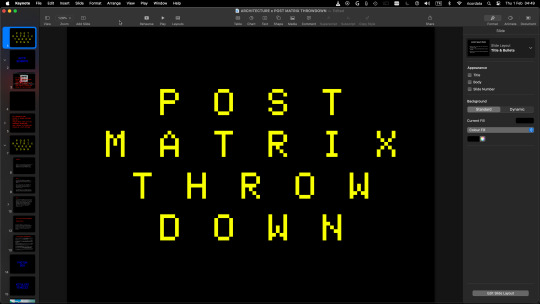
Here begins the show, co-starring COMPUTERANUS, the machine I use to create my multidimensional art.
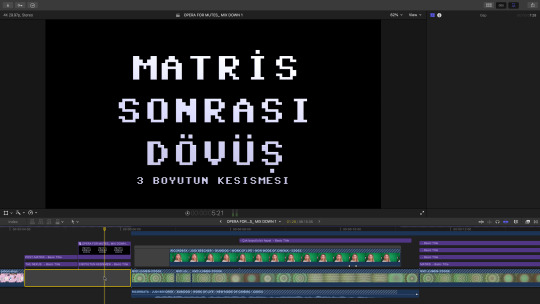
Multidimensional, because the art exists in three different forms, yet it's a singular manifestation of the metaphysical function of my existence: The Map of the Universe.
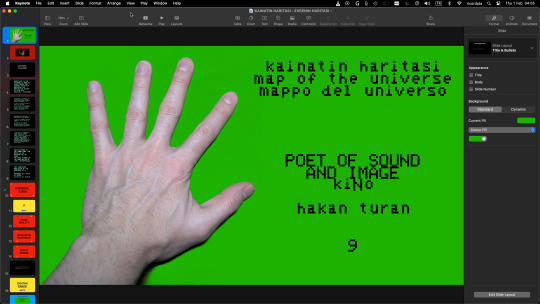
Multidimensional, because it exists simultaneously in three different countries as the collision of three different worlds... in Türkçe / English / Italiano.
— Ricordata, Hollywood.
#Post Matrix Throwdown#Matris Sonrası Dövüş#Hakan Turan#Poet of Sound and Image#KiNo#Delikanlı Hayal#MahşerGazinosu#Corpus Enigma#Invasion from Within
0 notes
Photo

My dreams are coming through. The End of Hollywood. Imagine 11500 people who write all the bullshit that you see here, there and everywhere. That’s eleven thousand foot soldiers who sit down and put their experiences, thoughts and professional chops at the service of what is inevitably disposable, fickle movies and shows. How many writers work on a single tv show in America? Like in a kindergarten story circle, a ton. That’s why their crap is template ridden, controlled from top to bottom, uninventive or completely berserk. Most of them are filling up blanks on a document that is predetermined down to the minute and the dot. They rehash existing material, words, characters, genre to produce the majority of the mental floss. There are probably no more than 50 excellent writers in Hollywood today. But, the rest?! God bless the artisans, real artists, actors, writers, costume designers, stylists, technicians.. Just like the government and media, this whole machine has to be dismantles, ideologically sanitised, equalised and purged to mirror the society's last critical hour. — Post-Matrix Throwdown #NewYorkTimes #Hollywood
0 notes
Photo
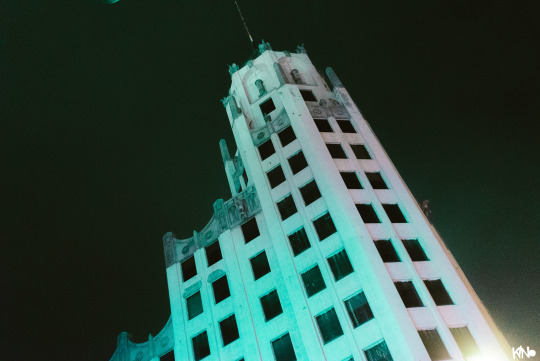
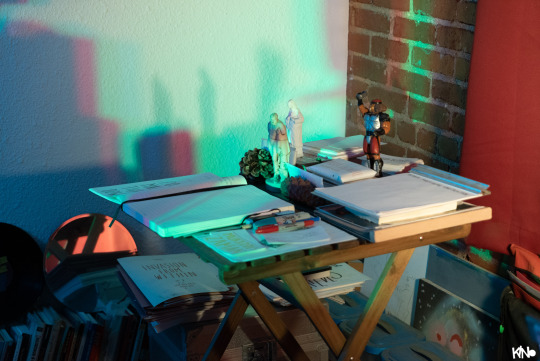
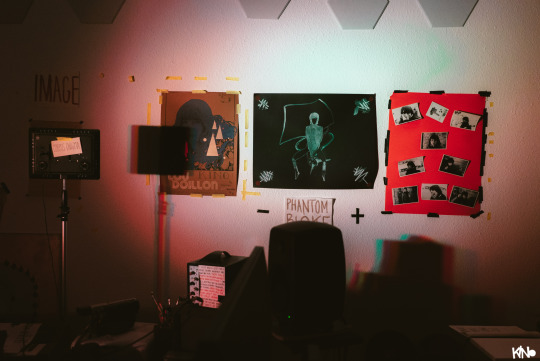
I walk alone... Victory without War. The End of Hollywood. This is the moment in time when I sign off on the musical arrangement of NO CLICKS, NO VIEWS born out of POST-MATRIX THROWDOWN. A tremendously epic piece of music loading into the OPERA FOR MUTES. — Ricordata, Hollywood.
4 notes
·
View notes
Video
vimeo
This is a metaglyph, my invention. A-POST MATRIX THROWDOWN - METAGLYPH
0 notes
Photo




I have just solved all my digital problems to do with being a multidimensional creative spring in the age of dot com empires that has crumbled me into their business plan allocated for artists, anarchists, nonconformists and the rebellious alike. Quite simply, POST-MATRIX THROWDOWN is a live show that starts in the computer and turns into the live manifestation of all my creative faculties in one set up. You will jump inside the molecular construction of my intellectual and artistic system, the studio and infinite auditions and visions of film and music as I assemble NEW VAGUE CITY. https://poetofsoundandimage.com/post-matrix-throwdown
0 notes
Photo



Our fruitful collaboration with the multi-disciplinary performer Judi Beecher on its second day. She performed this text for THE END OF HOLLYWOOD, happening inside INVASION FROM WITHIN, the new season of NEW VAGUE CITY at the capital of image-reality. — Ricordata, Hollywood.
#kino#judi beecher#new vague city#invasion from within#the end of hollywood#the great reset#post-matrix throwdown#opera for mutes#Corpus Enigma
0 notes
Photo





From the Montage Desk: Post-Matrix Throwdown is equivalent of an album, only in 3D, that starts as a live performance, uniting music and its subject matter in the psychedelic world of New Vague City. Opera for Mutes contains The Post-Matrix Throwdown and Laser Kid is the main aspect-character who is creating the work. — Ricordata, Hollywood.
0 notes
Photo


F for FRANK! — Lost Angles
CE Sequence INVASION FROM WITHIN.
0 notes






